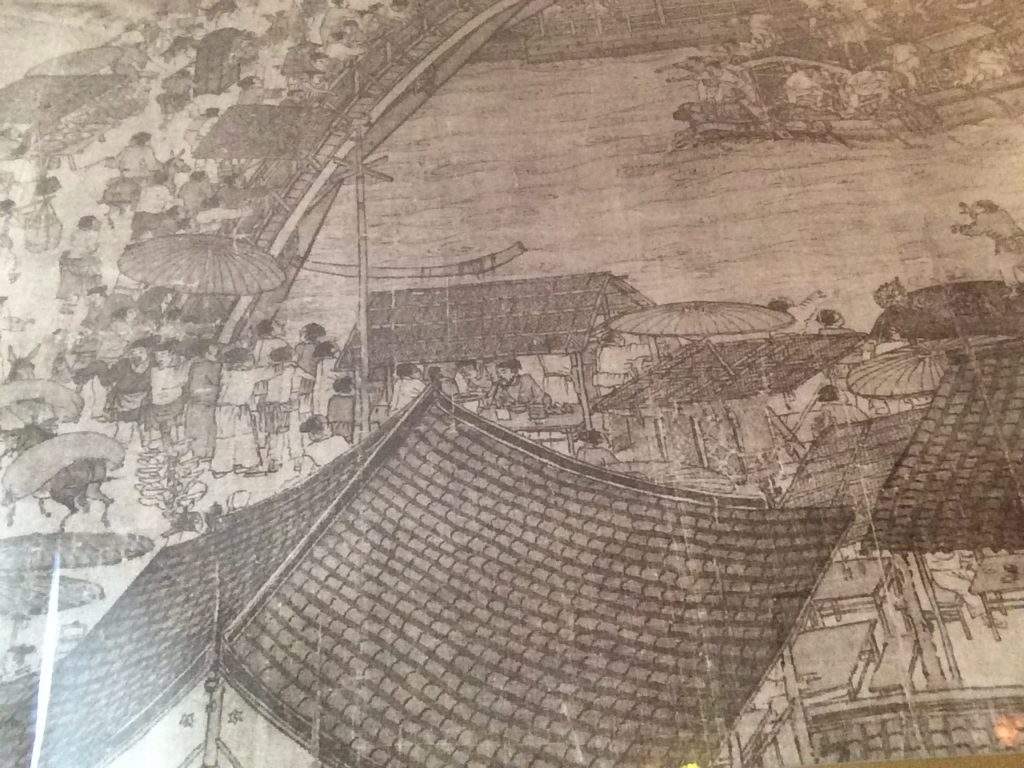Throughout the years, students are taught of the conquest of lands and of the conversions of savage people into “improved” religions and civilized mannerisms. Everyone knows “In 1492, Columbus sailed the ocean blue” and how civilization has been formed into the masterpiece that it is today. It is not until higher, adult education and life experience that we see how cultures and people were and continue to be domineered. Just as expansion contains conquerors, it also brings forth victims such as the “non-Chinese” during the 15th century, Aztecs when Cortez planted Spanish rule in Mexico and Africans during the triangle trade. There are so many untold stories and accounts of colonialism that have been destroyed, but new discoveries have ascertained information on those robbed of their culture.
 In the early 15th century, the Chinese Empire flourished. However, Confucianism, the principal dogma of the time, stated that the natives of China should remain loyal and look down on foreigners because they were not the winning and innovative Chinese. To be non-Chinese was very difficult because you were not able to feel pride of the 400-foot junks and the Treasure Fleets. Instead, you were viewed with suspicion and disdain. You could still participate in the trade of products like sandalwood, aloe, pistachio nuts, silks and porcelain. After all, the Silk Road and “porcelain route, which spanned 6,000 miles,” (Levathes, p.35) were key elements to the prosperity of the country. Now, those who were Korean, Mongol or European and had seen the rising empire of China, knew that China dictated the seas. Koreans had to give “hundreds of Korean virgins to the imperial harem as gifts,” so of course, the Koreans were very humiliated. “The memory of this humiliation has not faded from the Korean national conscience” (Levathes, p.133). Mongols were treated as enemies as well and developed great resentment towards their neighbor’s prosperity, whereas Europeans regarded the Chinese Empire with awe and jealousy. A European might think of the impressive imports from China and how beautiful their boats were, but that awe came with jealousy and envy.
In the early 15th century, the Chinese Empire flourished. However, Confucianism, the principal dogma of the time, stated that the natives of China should remain loyal and look down on foreigners because they were not the winning and innovative Chinese. To be non-Chinese was very difficult because you were not able to feel pride of the 400-foot junks and the Treasure Fleets. Instead, you were viewed with suspicion and disdain. You could still participate in the trade of products like sandalwood, aloe, pistachio nuts, silks and porcelain. After all, the Silk Road and “porcelain route, which spanned 6,000 miles,” (Levathes, p.35) were key elements to the prosperity of the country. Now, those who were Korean, Mongol or European and had seen the rising empire of China, knew that China dictated the seas. Koreans had to give “hundreds of Korean virgins to the imperial harem as gifts,” so of course, the Koreans were very humiliated. “The memory of this humiliation has not faded from the Korean national conscience” (Levathes, p.133). Mongols were treated as enemies as well and developed great resentment towards their neighbor’s prosperity, whereas Europeans regarded the Chinese Empire with awe and jealousy. A European might think of the impressive imports from China and how beautiful their boats were, but that awe came with jealousy and envy.
Europeans wanted to convert others to Christianity and expand their culture. While China wanted to maintain rule and to keep loyalty among her people. China did eventually refine Confucianism so that it was easier for foreigners to live among the Chinese, but those of pure Chinese lineage still had cultural superiority and could know that their ancestors created the powerful land on which they lived. While others resented this, China went on to lead the way to new innovations and discoveries.
Just as the non-Chinese felt, there were Aztecs with mixed feelings in Mexico. When Cortez was introduced to Mexico, Montezuma and the Tenochtitlan thought he was Quetzalcoatl, founder of the Aztec nation and on of their gods. The Aztecs send human sacrifices and other offerings to the Spaniards and guided them through Mexico in hopes of pleasing them. However, the Aztecs were very offended an angered when the Spaniards did not accept offerings and gifts. The Spaniards “were filled with disgust and loathing, and spat on the ground and wiped away their tears” (Portilla, p.33). Imagine being an Aztec: apprehensive about your visit by gods because you don’t know if they are coming to punish you or to replenish your land, than meeting your gods. What if those gods have no respect for you or the things that you do. The Aztecs had so many bad omens: disfigured men, shooting stars, volcanic eruptions etc., as well as having difficulties understanding what the Spaniards wanted, so they became more and more tense to what lay in their future.
Would they be killed? They had no idea. Montezuma tried sending magicians to “harm or drive away the spirits,” (Portilla, p.32) but when that didn’t work the Aztecs had to try to appease the Spanish – especially since the Spaniards had advanced weaponry that could kill the hundreds of thousands of Indians, though the Spaniards themselves were numbered with only a few hundred. Knowing that they could die or that they would lose everything that they had known, the Aztecs prepared for battle against the Spaniards. They tried to understand what Cortez and his people wanted, but there was too much cultural chauvinism and too little comprehension between the two worlds.
The Aztecs viewed the Spaniards as forceful when the Spaniards drove crosses into the grounds and commanded that others worship Christianity wherever they came upon. The Spaniards even allied with the enemies of the Aztecs, so it is only natural for the Aztecs to be suspicious of the Spaniard’s motives, especially when Cortez always had his army alert and told them to always “Br prepared” (Diaz, p. 117). Some Spaniards even went to hurt the Aztecs when orders were not given. Alvarado, for instance, attached the Aztecs so “they would not attack us first” (Diaz, p. 240). It is only permissible that the Aztec Indians were afraid and angry. They were losing their homes and entire culture to foreign powers that were cruel and unjust to them.
Africans were treated very much like Aztecs, except they were taken from their homes to far off lands where they were forced to adopt new cultures and work as slaves. Olaudah Equiano described the typical way he and his sister were kidnapped and separated. He was purchased and traded as if he were “a piece of property” (Allison, p.3) and nothing more. Unlike most slaves, Olaudah was given an education and a chance to explore the world. Most slaves worked on plantations in the cotton and sugar cane fields – dying in slavery. They were very loyal to people of color and that created a close-knit community that helped Africans through the hard times that they had to face. Olaudah mentions that there was a little black boy who greeted him like he was a brother and how connected he felt to all Africans later in life because of this experience. A life where you are the trade is not life at all and kills even the luckiest slave. As a result though, Africans understood the trade system. Africans had slaves of war and of crimes such as adultery so they knew as much as possible about their surroundings. In addition, when Africans became slaves of the Americas and Europe, it was still different from being slaves to other Africans where “kinfolk and landlord became similar” (Wright, p.51). As mentioned earlier, Africans were just “pieces of property.”
Though we are not taught of the desecration of cultures and the humiliation of the defeated people of the world until nearly adulthood, scholars have found written accounts that prove innovations of culture and changes in technologies are not always right. By putting ourselves into the shoes of others, maybe someday cultural destruction will diminish. We could at least learn from the brutal over throwing of cultures and think before we act so people, like the Aztecs during the rising of the Spanish Empire, Africans during the triangular trading system, and the non-Chinese during the height of China’s rule, would not have suffered in vain.
Written in 2002 source:The Broken Spears: The Aztecs account of the conquest of Mexico: Ed. Miguel Leon-Portilla

